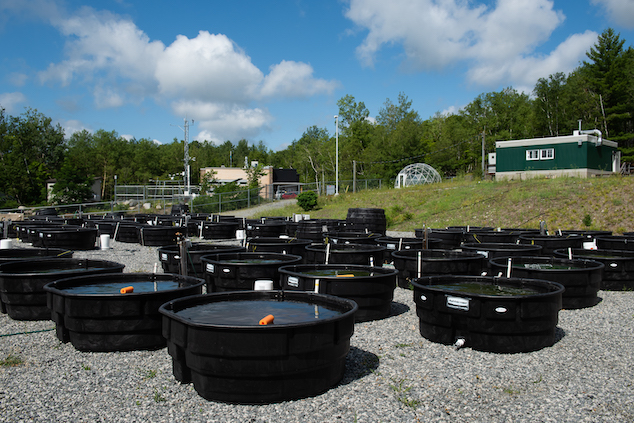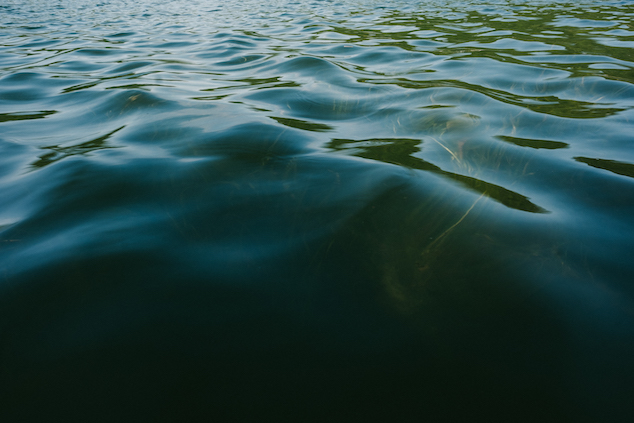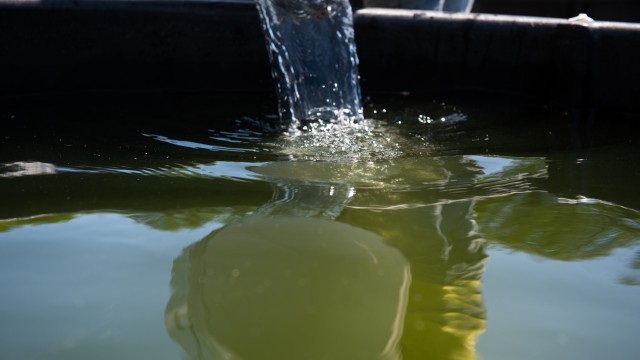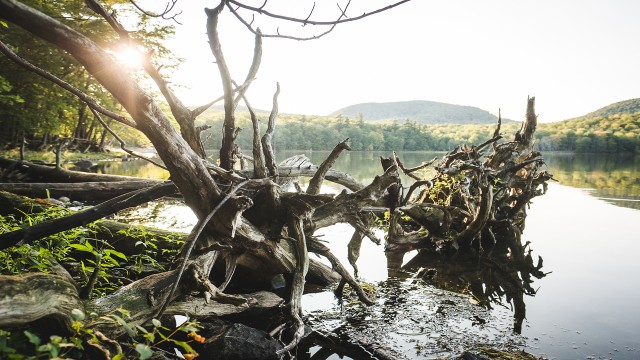Inaugurated in 2016, the Large Experimental Array of Ponds (LEAP) at Gault Nature Reserve consists of 96 “ponds.” These ponds, which are, in fact, cattle tanks, can contain up to 1,000 litres of water. By filling them with water from Lac Hertel, scientists can replicate some aspects of freshwater ecosystems and study how communities of freshwater organisms like plankton respond and adapt to different environmental stressors.
In recent years, the McGill-led team of researchers at LEAP has been studying the impacts of commonly used pesticides such as the herbicide Round-Up on freshwater microorganisms. In a series of experiments, the researchers found that Round-Up was especially disruptive to plankton communities, leading many sensitive species to extinction even at concentrations that are currently considered safe under North American guidelines.
How does LEAP work?
Even though LEAP is located over a kilometre from Lac Hertel, a piping system gives it direct access to lake water throughout the field season. Importantly, it is not only water that finds itself in these ponds but also the microorganisms that live in that freshwater, like plankton, bacteria, and microalgae. The researchers are interested in what happens to these microorganism communities when their environment is disturbed.
When studying biodiversity, “the biggest challenge right now is generating the knowledge to keep pace with the changes that we are seeing in the environment.” explains Andrew Gonzalez, Professor and Liber Ero Chair in Biodiversity in the Department of Biology of McGill University in a recent interview. Gonzalez explains that at LEAP, “we contain the ecosystems in these [basins that] we call mesocosms. That allows us to speed up the process of research and repeat it. And then you can do research at a much greater scale and a much shorter lapse of time. That is game-changing.”

The LEAP facility at the Gault Nature Reserve (photo: Alex Tran)
Zooming in on the effects of common pesticides
The use of pesticides is widespread in Canada and around the world. When these products are used on agricultural fields, they are often picked up by rain and seep into nearby water systems. These contaminants then accumulate in lakes and ponds, which can have adverse effects on local ecosystems.
In their experiments, the scientists at LEAP have been monitoring the abundance and diversity of plankton communities in response to the herbicide RoundUp, imidacloprid (a common insecticide), and nutrient fertilizers.

Students sample the water of one of the LEAP ponds (photo: Alex Tran)
The researchers found that Round-Up was especially disruptive to plankton communities, leading many sensitive species to extinction even at concentrations that are currently considered safe.
At first glance, the results may have looked promising. Following an initial die-off, the plankton communities generally recovered in abundance within a few weeks of being exposed to the herbicide. However, the structure of these communities was different from before the introduction of Round-Up. A few tolerant species now dominated the once diverse communities, and these effects persisted through time.
Why does it matter?
The future of freshwater ecosystems and all the organisms that depend on them (including us!) relies on their ability to withstand widespread environmental change. When biodiversity is lost, freshwater communities may lose their ability to adapt to and recover from stressful events. The pressure from activities such as agriculture may therefore leave them more vulnerable to future disruptions.
These findings are also concerning because the organisms affected by this runoff are at the base of the food chain in freshwater ecosystems, which could lead to cascading effects.
The work of scientists at LEAP takes advantage of natural populations in an experimental setup outside of a typical laboratory environment to help predict the future of our freshwater ecosystems. After only a few field seasons, the McGill-led research team has already published a series of research papers that can help support decision-making for the future of Canada’s freshwater ecosystems.

(Photo: Alex Tran)
Frédérique Truchon
Communications Associate
Gault Nature Reserve of McGill University
To learn more
- Conserving the world’s biodiversity, video published on December 6.
- Freshwater ecosystems at risk due to glyphosate use, published on September 7, 2021 by Katherine Gombay.
- The “multiplier” effect, published on November 23, 2022 by Allyson Rowley.
Publications discussed in this article
- "Resistance, resilience, and functional redundancy of freshwater bacterioplankton facing agricultural stress", by Naíla Barbosa da Costa et al., was published in Molecular Ecology. DOI : 10.1111/mec.16100
- "Widespread agrochemicals differentially affect zooplankton biomass and community structure", by Marie-Pier Hébert et al., was publishd Ecological Applications. DOI : 10.1002/eap.2423
- For the complete list of publications, consult the LEAP website.
Header: One of the ponds used at the Large Experimental Array of Ponds (LEAP) (photo: Alex Tran)
Related articles
Invasive Species: A Study of Tench and Their Invasion Potential
August 4, 2022. To understand the potential impact that Tench might have on the Great Lakes Basin, McGill Ph.D. student Sunci Avlijaš conducted a study in 2018 examining the effects that temperature and type of lake environment have on Tench growth.


